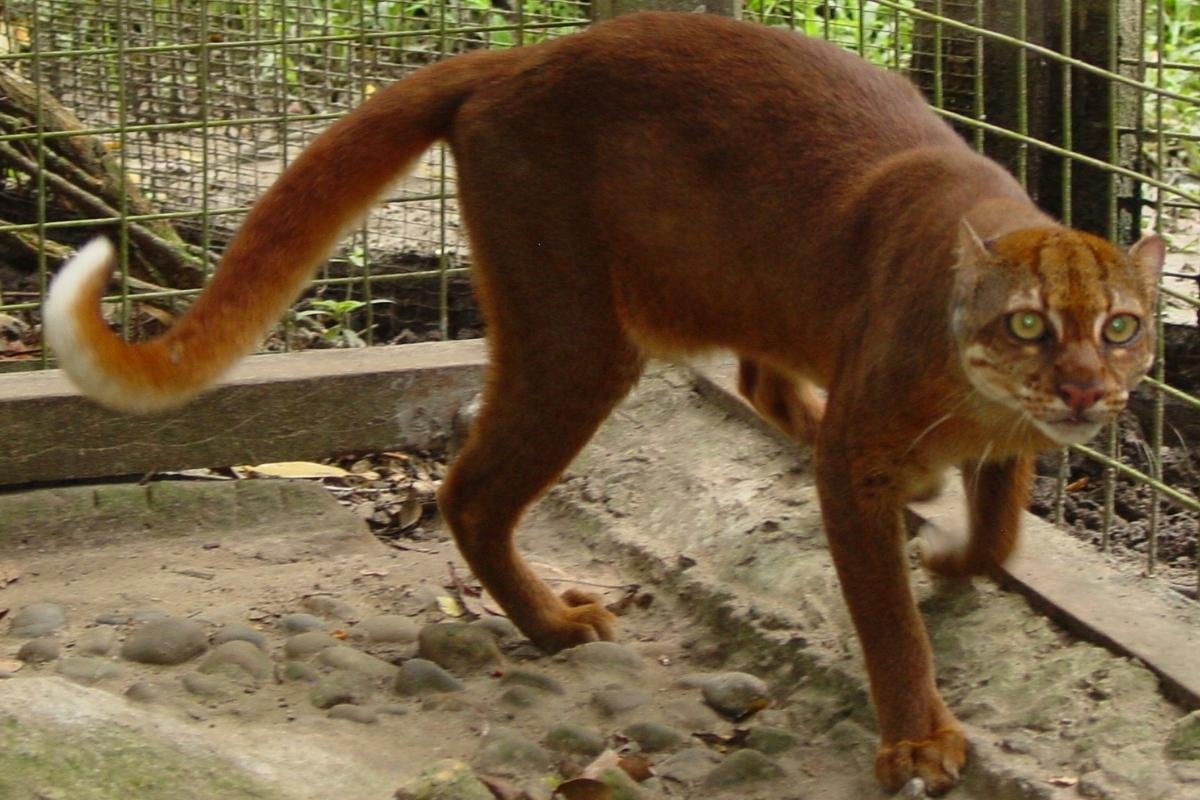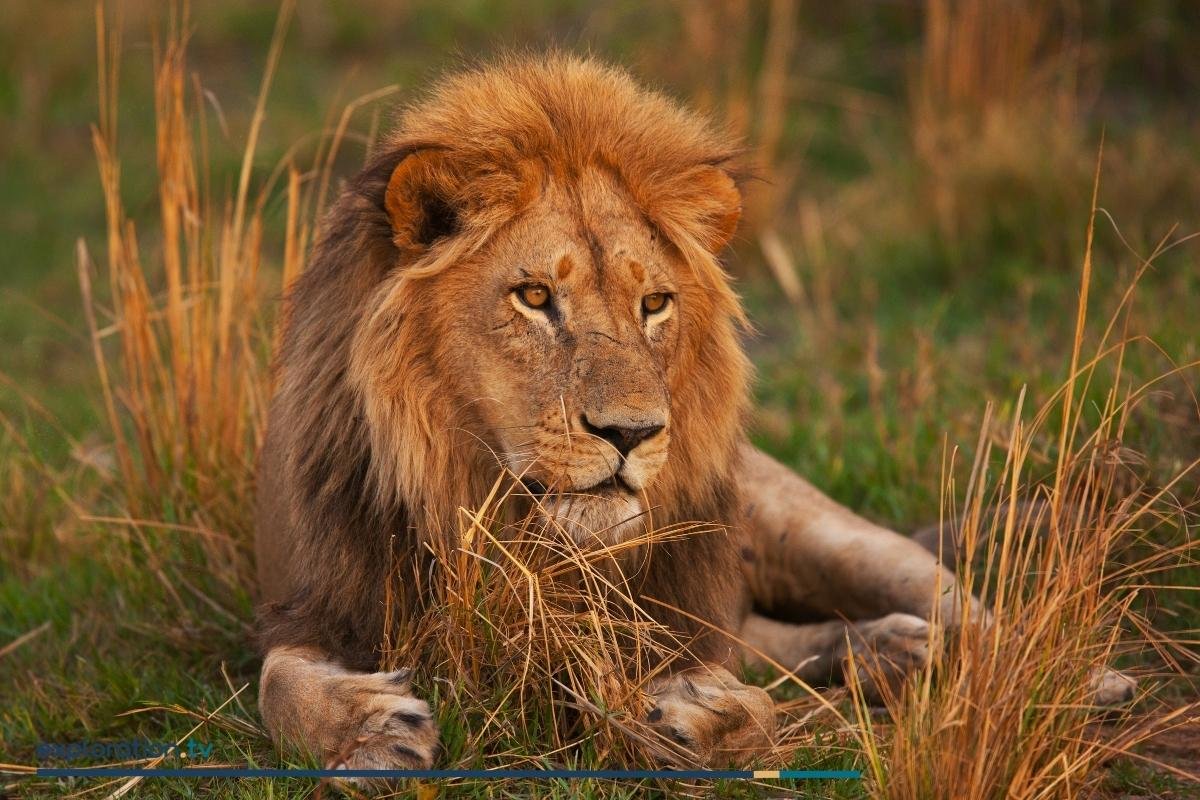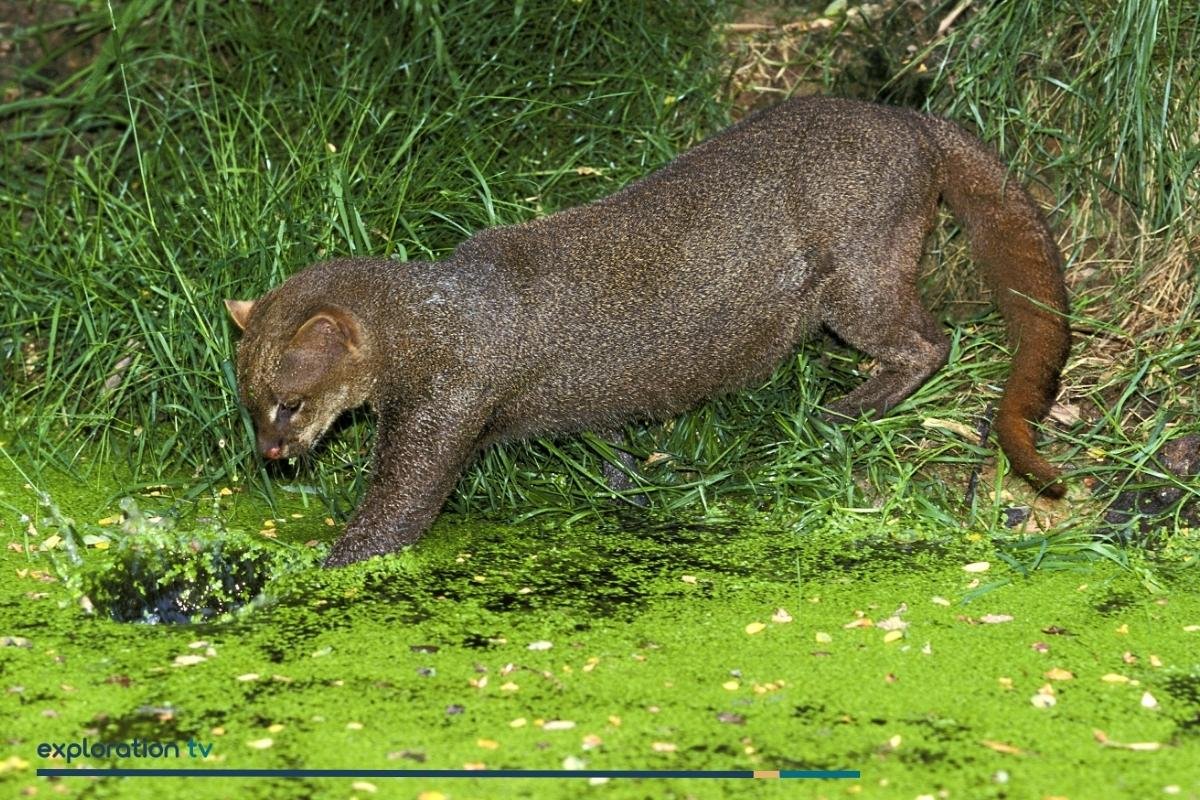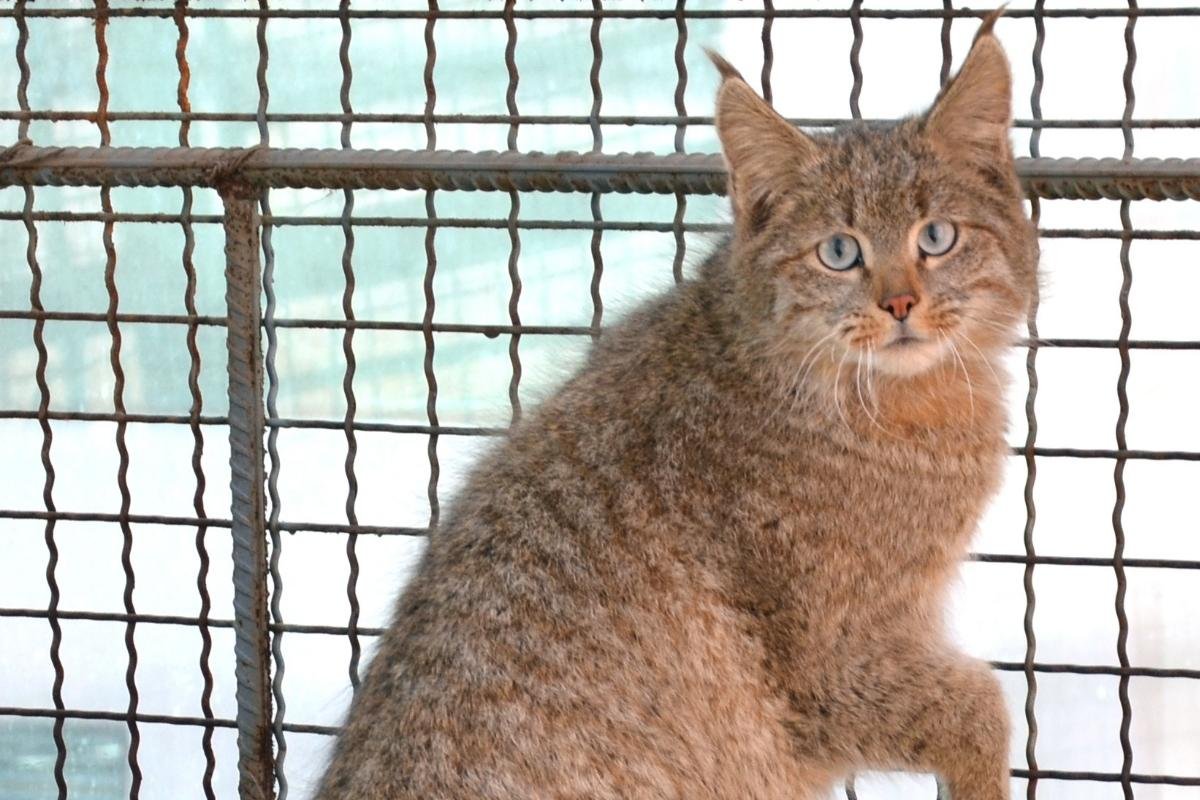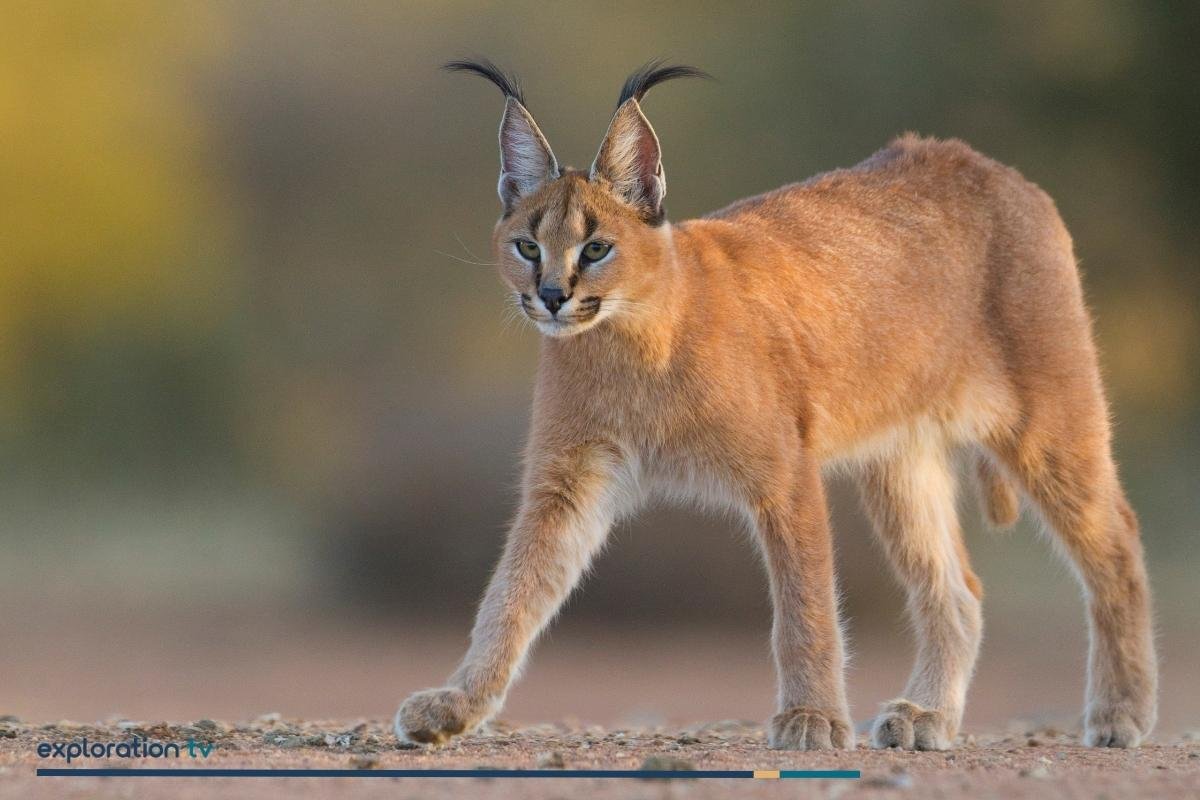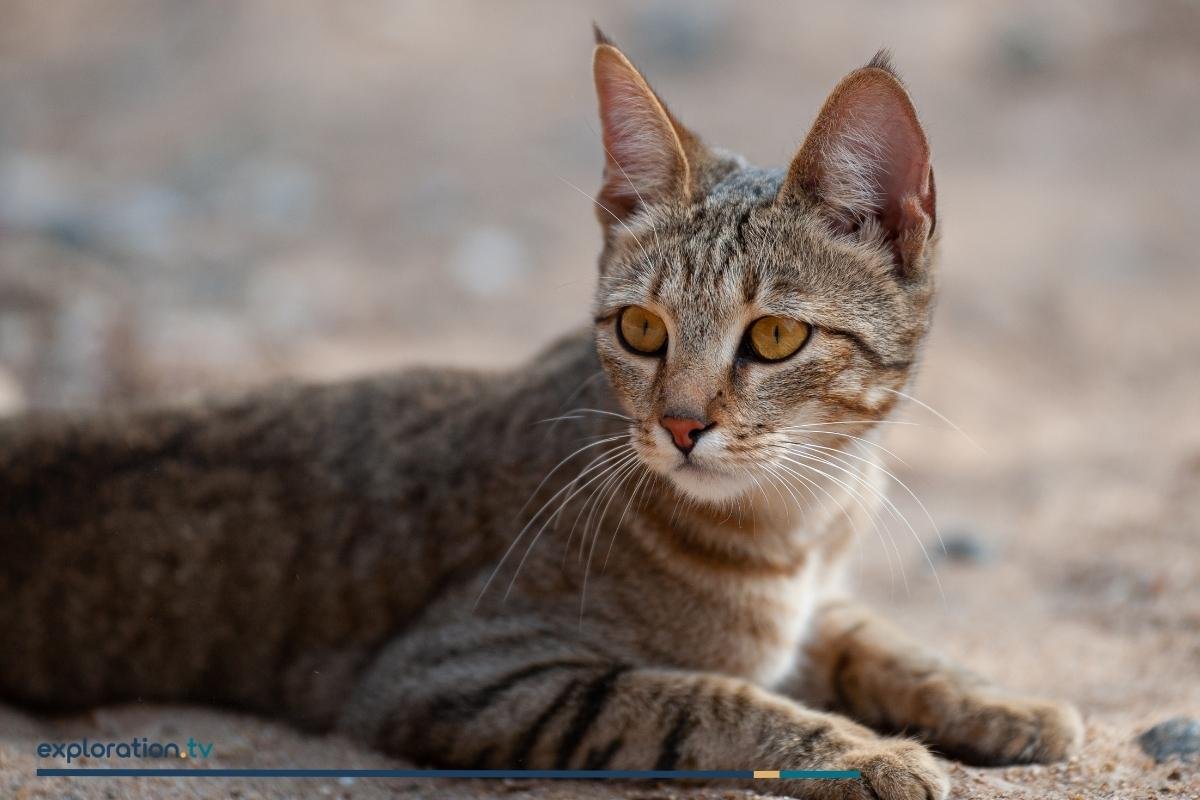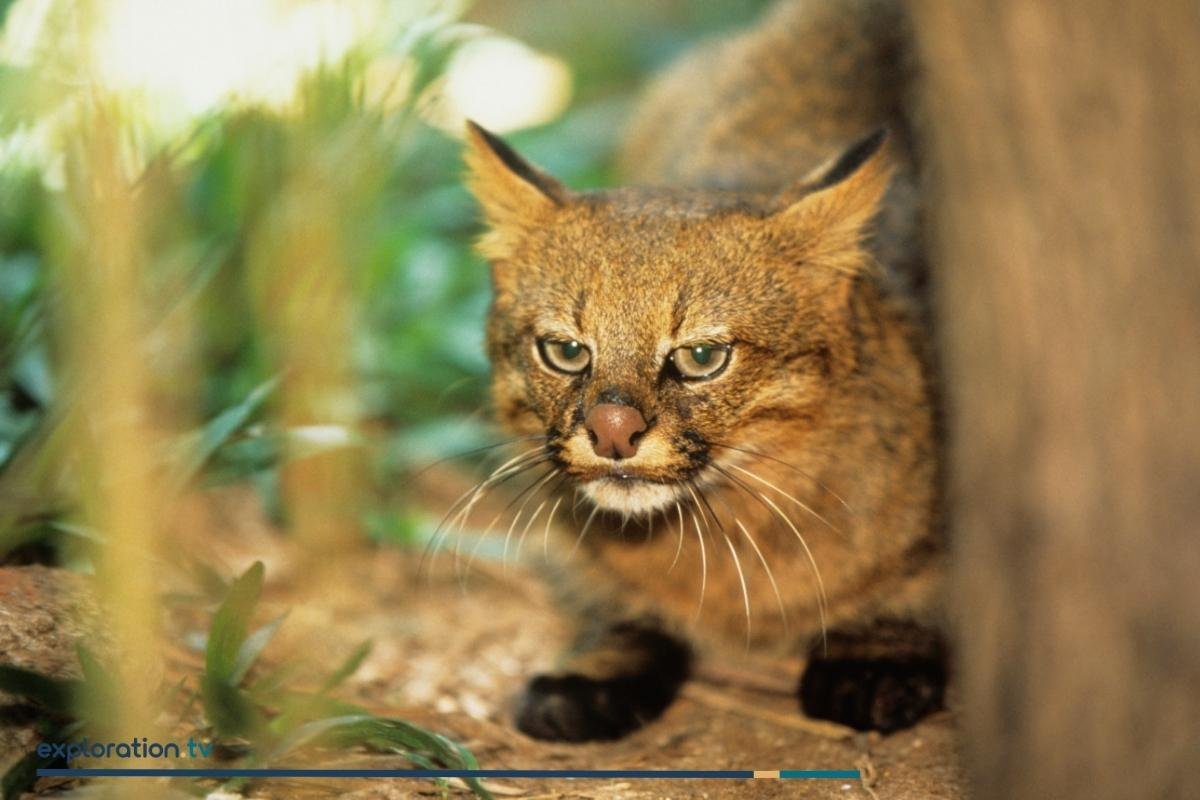Asian Golden Cat
Asian Golden Cat, also known as Temminck’s cat, is a medium-sized wild feline native to the forests of Southeast Asia, the Himalayan foothills, and parts of China. Known for its beautiful and highly variable coat patterns, this cat is an elusive and secretive predator, making it one of the most mysterious felines in the wild. Despite its adaptability, the Asian golden cat faces numerous threats, including habitat loss and poaching.
Meet the Asian Golden Cat
Classification
The Asian golden cat is a robust, muscular feline, typically measuring 66 to 105 cm (26 to 41 inches) in body length, with a tail length of 40 to 57 cm (16 to 22 inches). It stands about 56 cm (22 inches) at the shoulder and weighs 9 to 16 kg (20 to 35 pounds), making it approximately twice the size of a domestic cat.
What makes this cat unique is its highly polymorphic coat, which can range from golden-red, dark brown, gray, and even melanistic (black) variations. Some individuals also exhibit the “ocelot morph,” a spotted coat pattern resembling that of an ocelot or leopard cat. Scientists believe that this wide range of coat colors may be an adaptation to different habitats, allowing the cat to blend into various environments.
The Asian golden cat’s facial markings include white lines running from the inner corners of the eyes down to the mouth, dark markings on the forehead, and a distinctive white patch on the back of its ears. These features, combined with its long tail and powerful limbs, make it a striking yet elusive predator.
Where Does the Asian Golden Cat Live?
Biogeographic Realm: Indomalaya
Continents: Asia
Subcontinents: East Asia, Southeast Asia, South Asia
Countries: Nepal, India, Bhutan, Bangladesh [Show all countries]
Habitats (IUCN): Forest, Savanna, Shrubland, Grassland, Desert
The Asian golden cat has a broad distribution across South and Southeast Asia, spanning countries such as India, Nepal, Bhutan, Myanmar, Thailand, Laos, Cambodia, Vietnam, Malaysia, and southern China. Its habitat preference includes:
- Tropical and subtropical evergreen forests – Primary habitats offering dense vegetation and abundant prey.
- Dry deciduous forests – Found in India, Myanmar, and Thailand.
- Montane forests – Seen at elevations up to 3,960 meters (12,992 feet) in Nepal.
- Rocky areas and bamboo forests – Occasionally observed in more open or mixed environments.
This cat is highly adaptable, capable of living in different forest types, but it is rarely found in human-altered landscapes. It is largely dependent on intact forests, making deforestation a significant threat to its survival.
What Do Asian Golden Cats Eat?
The Asian golden cat is a carnivorous predator, preying on a diverse range of animals. Its diet includes:
- Small to medium-sized mammals – Rodents, hares, squirrels, and small deer (such as muntjacs).
- Birds – Ground-dwelling species such as pheasants and partridges.
- Reptiles – Monitor lizards and snakes.
- Livestock – Occasionally preys on domestic chickens and goats, leading to conflict with farmers.
It is an opportunistic hunter, meaning it will adapt its diet based on prey availability. The Asian golden cat is both a ground hunter and an adept climber, capable of hunting arboreal prey in the trees. Its strong limbs, sharp claws, and powerful bite allow it to ambush prey efficiently, often using stealth before launching a rapid attack.
What Eats Asian Golden Cats? – Predators & Natural Enemies
As a mid-sized predator, the Asian golden cat faces threats from larger carnivores in its ecosystem, including:
- Tigers (Panthera tigris) – The dominant predator in many of the Asian golden cat’s habitats.
- Leopards (Panthera pardus) – Another competitor and occasional predator.
- Clouded leopards (Neofelis nebulosa) – May compete for prey, particularly in dense forests.
- Dholes (wild dogs) (Cuon alpinus) – Can threaten solitary individuals.
- Large raptors – Eagles may prey on kittens.
To avoid these threats, Asian golden cats rely on their agility, climbing skills, and secretive nature. Their varied coat colors act as camouflage, helping them blend into different environments to evade detection.
Behavior & Lifestyle
The Asian golden cat is a solitary and territorial animal, spending most of its time alone except during mating season. It marks its home range with scent markings and scratch marks on trees, signaling its presence to other cats. Though it is primarily crepuscular, being most active at dawn and dusk, it has also been observed exhibiting nocturnal behavior in regions with high human activity or where prey availability dictates its hunting schedule.
This feline is an excellent climber, often using trees for both hunting and resting. However, it primarily hunts on the ground, employing stealth and patience to stalk and ambush its prey. Its secretive nature makes it difficult to study in the wild, and much of what is known about its behavior comes from camera trap footage and rare field observations.
How Do Asian Golden Cats Reproduce?
Due to their elusive nature, much of what is known about the reproductive behavior of Asian golden cats comes from studies of captive individuals. Mating is believed to occur year-round, though it may peak in certain seasons when prey is more abundant. After a gestation period of approximately 78 to 80 days, females give birth to one to three kittens in a secluded den, such as a hollow tree or a dense thicket.
Kittens are born blind and helpless, relying entirely on their mother for warmth and nourishment. By the age of two months, they begin to venture out of the den, exploring their surroundings and learning essential survival skills.
They are fully weaned by six months of age and become independent hunters soon after. Young Asian golden cats typically reach sexual maturity between 18 to 24 months and leave their mother’s territory to establish their own.
Are Asian Golden Cats Endangered? – Conservation Status & Threats
The Asian golden cat is classified as Near Threatened on the IUCN Red List, with its population declining due to several key threats. The most significant danger comes from deforestation, as logging, agriculture, and human settlement expansion continue to shrink its habitat. As forests are cleared, the cat’s prey becomes scarcer, forcing it to venture closer to human settlements, where it is often killed for attacking livestock.
Poaching is another major issue, as the Asian golden cat is hunted for its fur, bones, and body parts, which are used in traditional medicine and the illegal wildlife trade. Additionally, some individuals are captured and sold as exotic pets. Despite legal protections in many of the countries where it is found, enforcement is often weak, and illegal hunting continues to pose a significant threat.
Efforts to protect the Asian golden cat include the establishment of protected reserves and national parks throughout its range, where habitat destruction is restricted. Anti-poaching initiatives and stricter enforcement of hunting bans aim to curb illegal trade. Conservationists are also working to educate local communities about the ecological importance of this species, encouraging coexistence rather than conflict.
Despite these measures, more action is needed to preserve this mysterious and beautiful feline. Further research, habitat conservation, and stronger laws against poaching will be crucial in ensuring that the Asian golden cat continues to thrive in the wild for generations to come.
